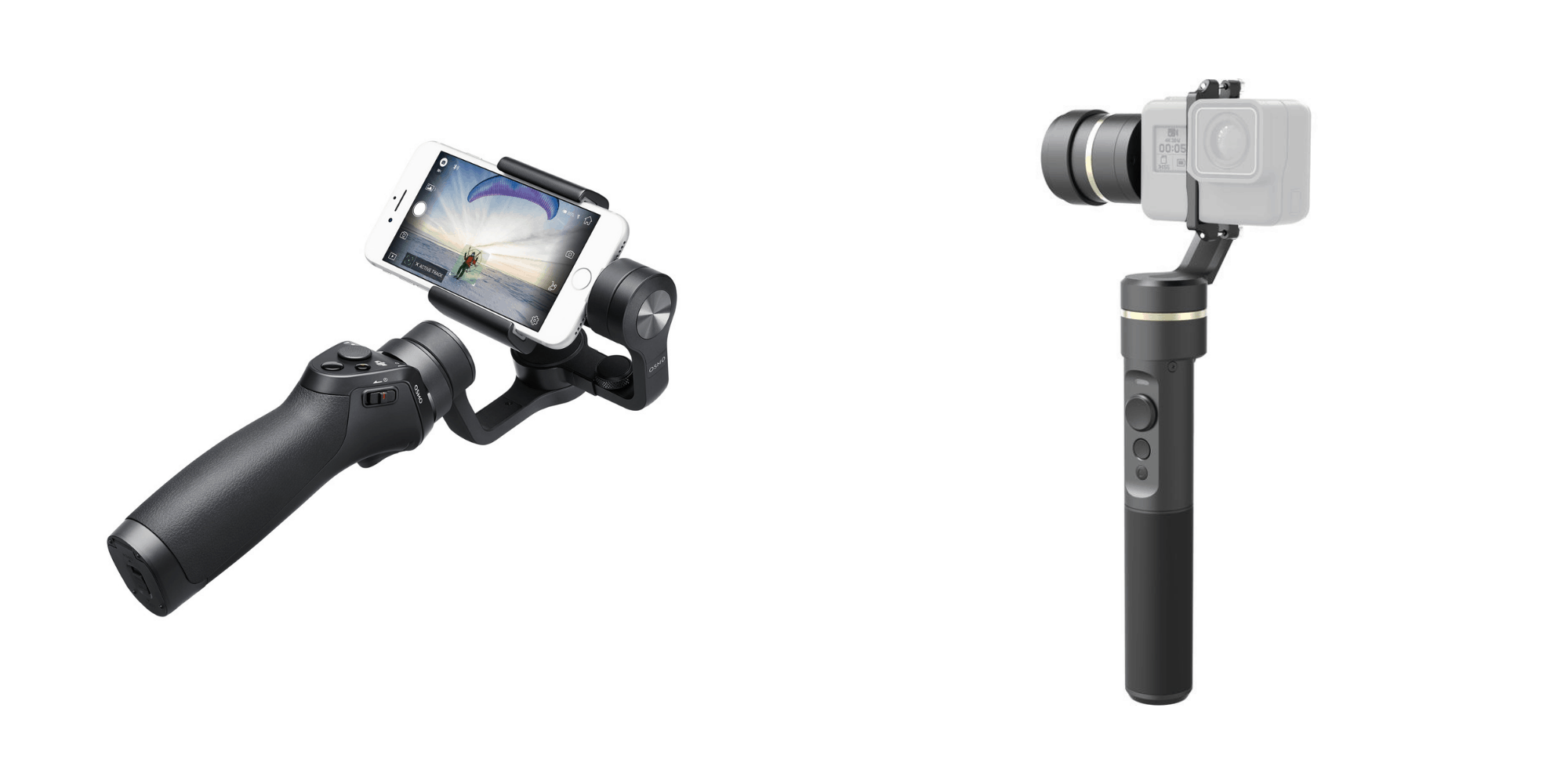Some time ago, I came across a Reddit post that featured a video of a skateboarder cruising around a London skatepark – recorded by his dog.
The skateboarding itself is pretty cool, but what sticks out most is just how stable the footage is. As it turns out, the secret isn’t some kind of black magic, but rather a pretty neat accessory known as a “gimbal” stabilizer.
A gimbal is a tool that uses motors and intelligent sensors to support and stabilize a camera – meaning you can film silky smooth video footage while on the move.
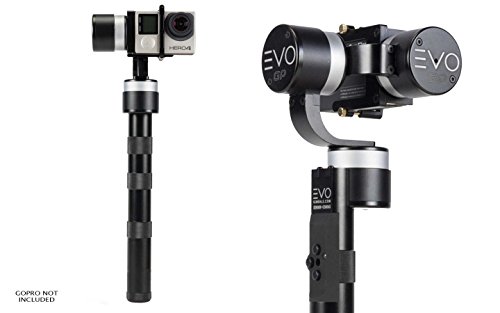
How Does A Gimbal Work
In Hollywood, film producers in the past typically employed very expensive Dollys or Steadicams that use physical moving parts to keep things steady. These tools aren’t computer assisted, so they require the operator to be highly skilled in using them.
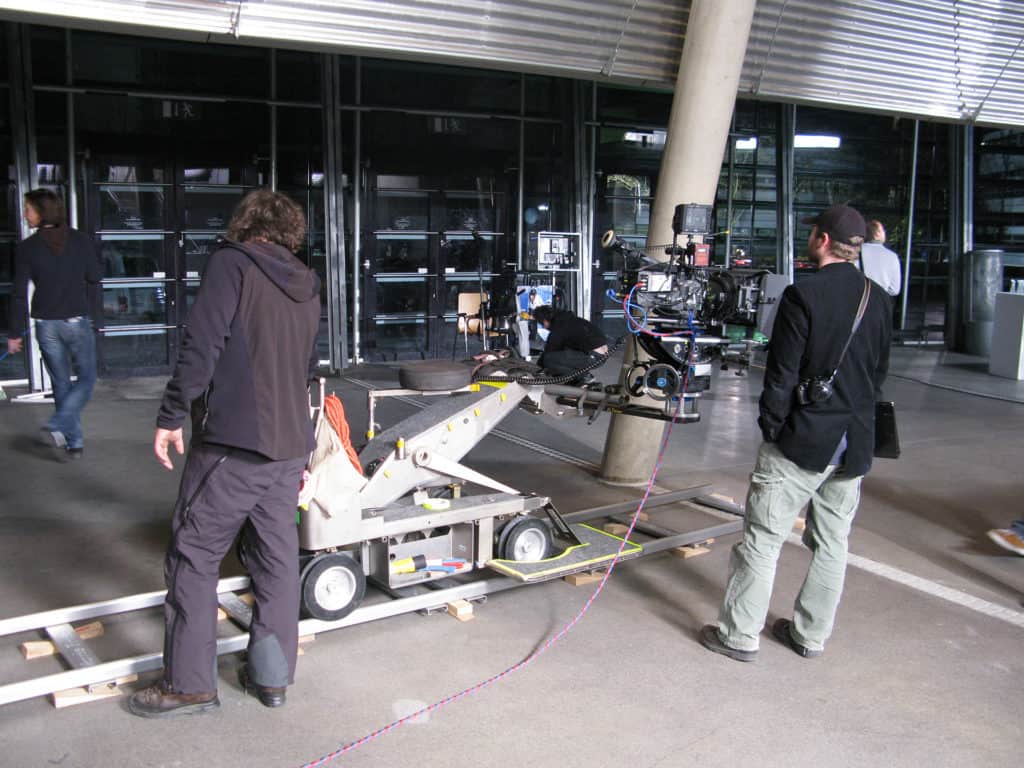
Gimbals, on the other hand, are a more recent ‘digital’ kind of miniature stabilizer. They have their very own little brain and use sophisticated motion detecting abilities to essentially differentiate between the videographer’s intentional movements and unwanted camera shake.
Let’s consider your phone for a minute. It most likely has accelerometers and gyroscopes built-in which enables it to sense when you’ve flipped the screen or lifted it off the table.
A gimbal also has all that sensing capability PLUS some moving pivots and a camera mount. By utilizing quiet (obviously you don’t want the sound of motors being picked up by the mic!) brushless motors that make micro-adjustments to the arms, the mounted camera can be completely steady — just like when you lift up and move a chicken around:
A Closer Look At The Science Behind Gimbals
I’m not going to pretend to be an expert on the physics that goes into a gimbal, but I can at least give you the lowdown.
Any physical object can rotate in 3 dimensions: pitch, yaw and roll. If you’re familiar with adjusting camera tripods, you’ll probably have experience making adjustments in all three axes to get that perfectly lined up shot.
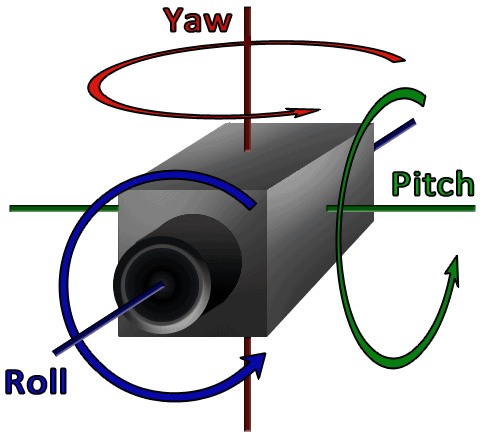
A shaking camera will obviously have random unwanted movement in all 3 axes. However, it is possible to effectively counteract those movements by producing movements in the opposite direction. Essentially, we do the exact opposite pitch, yaw and roll movements and voila, we have a perfectly stable camera.
This isn’t rocket science, but how can we actually produce those exact countermovements? Modern day technology, of course.
In a motorized gimbal, ‘inertial measurement units’ or IMUs (a fancy way of saying motion and rotation sensors) immediately send movement data to a computer which in turn calculates how much countermovement is needed in each axis.
Of course, sometimes the cameraperson will deliberately tilt the camera. The computer therefore uses advanced heuristic algorithms that can tell when the movement was deliberate or not. Pretty neat, right?
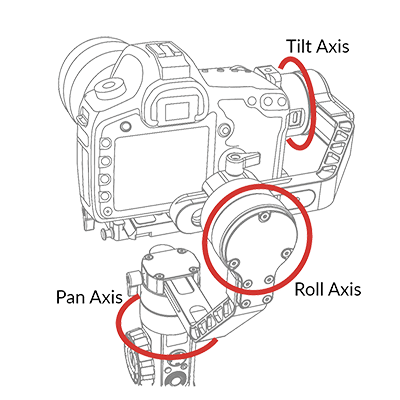
2-Axis and 3-Axis Gimbals
Most gimbals will either be 2-axis or 3-axis gimbals. You can probably guess that a 3-axis is superior. However a 3-axis gimbal is more expensive, and the difference the extra pivot makes might not be enough to warrant the extra cost.
A two axis gimbal corrects a camera that is pitching forward and back or rolling from side to side. It won’t correct unwanted movements in the yaw axis. A three axis gimbal, on the other hand, does correct unwanted shake in the yaw axis, resulting in even more stable footage.
When you’re recording videos, it’s likely that you yourself will have some ability to reduce camera shake, especially in one axis. So A 2-axis gimbal is perfectly adequate for a lot of purposes.
A 3-axis gimbal has its own downsides. It has an extra pivot, meaning it weighs more. This is an especially big downside if you want to use it with a camera drone, where a heavier load can reduce the drone’s flight time. A 3-axis gimbal also has an extra motor. The extra motor means more battery consumption by the gimbal, and hence a shorter battery life.
How To Stabilize Video Using A Gimbal
Using a gimbal is very easy. Once setup, it does all the hard work of stabilizing for you, so the difficult part is finding something interesting to film.
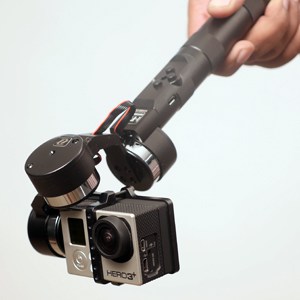
However, in the beginning at least, there will be some complications. Firstly, you need to choose the right gimbal for your camera.
If you’re using a GoPro or iPhone, a small handheld gimbal can be used. iPhone gimbals can typically also house GoPros thanks to their adjustable clamps, although a GoPro gimbal will have more direct compatibility. I’ve done extensive testing and made lists of what I rate to be the best gimbals for iPhones and best gimbals for GoPros.
If you’re wanting to use a gimbal with your DSLR or video camera on the other hand, you’re going to need a much bigger one. These bigger gimbals will of course also cost a lot more. Here is my list of the best gimbals for DSLR.
Once you’ve got your gimbal, you’ll follow the instructions to attach your GoPro/phone/DSLR/video camera to it and you’re pretty much set. Just be aware that the gimbal is designed only to cancel out those really small movements, and not bigger ones. For example, if you’re climbing the stairs, the entire camera will be moving up and down. If you don’t want that, you will still need to purposefully keep the camera moving upwards in a smooth line.
Gimbals Vs Mechanical Stabilizers
Hollywood has been producing amazingly stable footage for years, yet they didn’t rely on any of this new gimbal technology. Instead, they have been using fancy mechanical stabilizers called Steadicams. These beasts utilize a bunch of large counterweights, small counterweights, nuts, bolts, springs and more to mechanically counteract camera shake.
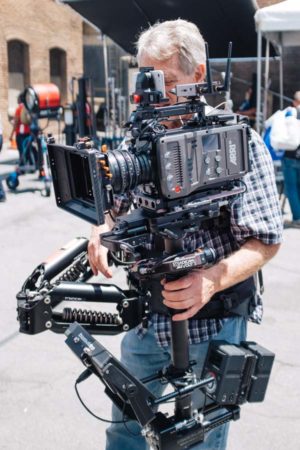
Gimbals are a newer phenomenon and technically only feasible because of the small nature of GoPros, iPhones, drone cameras and DSLRs. They are technically more advanced than mechanical stabilizers, but professional film studios use camera equipment that is too large for electronic motors to handle.
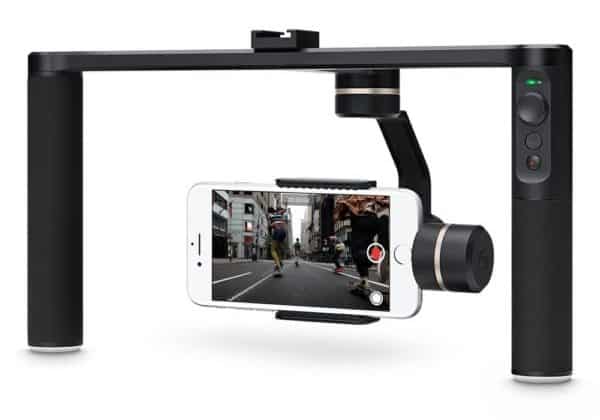
Most GoPro, iPhone and DSLR users will want to use gimbals for video stabilization. Many videographers WISH they could have a motorized gimbal for their huge video cameras, but they simply don’t.
However, it’s worth noting that mechanical stabilizers do exist for GoPros, phones and DSLRs. These are cheaper than motorized Gimbals but aren’t as effective and demand the cameraperson to use them skillfully. These were used by amateur videographers before motorized gimbals were a thing, but they don’t really have a reason to exist anymore (other than not requiring a battery).
A company known as Glidecam were industry leaders in small-camera stabilization before gimbals were a thing, but there is no doubt that motorized gimbals are where the smartphone/action camera industry is heading.
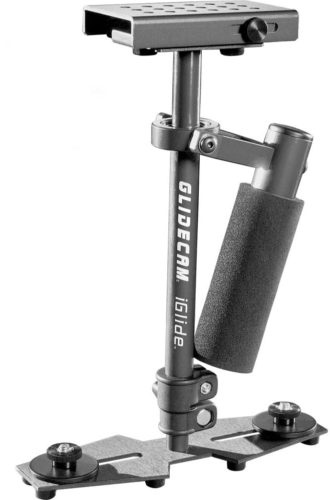
Amazing Camera Stabilization Is Now For Everyone
Gimbals have brought state-of-the-art camera stabilization to the masses. Just look at @fatmanthedog’s amazing videos on Instagram. Anyone with an iPhone, Android, GoPro can now take amazing action camera footage without any hassle.
Despite being a photographer that used to rarely shoot video, I have fallen in love with Gimbals and shooting video. It’s a cheaper hobby than photography and just plain fun. Whether you’re filming whilst travelling, skateboarding, skiing or whatever—doing it with a Gimbal is far superior to the built-in stabilization your phone or action camera has.
